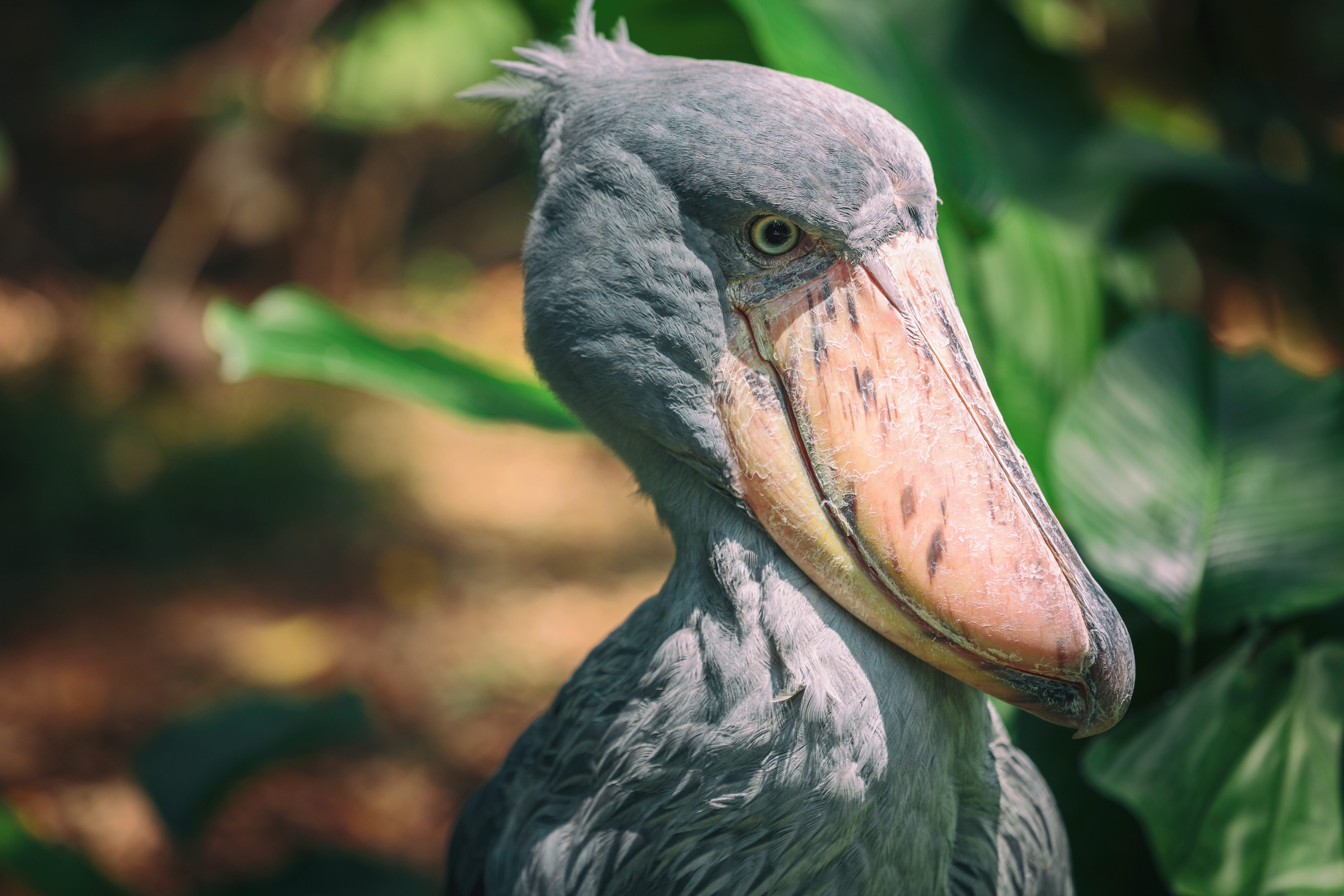
We all know what storks look like, but the shoebill stork is different. In fact, it’s not really a stork at all — it’s more closely related to pelicans and herons. With blue-white feathers, an average height of four feet, a wingspan that can reach up to eight and a half feet, and a massive eight-inch long beak, the shoebill stork can only be described as looking like a “prehistoric dinosaur bird.”
Found in swamps and marshes of the sub-Sahara countries of Uganda, Zambia, Sudan, Tanzania and Zaire, the Shoebill Stork was named as such in the 19th century because its beak looks like a cobbler’s pair of clogs. It’s believed that the enormity of their beaks makes up for their lack of sweat glands, as the Shoebill Stork will resort to gular fluttering to keep them cool. They will rapidly flap the membranes in their throats to increase evaporation, similar to why a dog pants to cool itself off. Their beak is also made of hard keratin with a sharp nail on the end to rip through prey. In addition to using their beaks to cool off, shoebill storks also defecate on their own legs — the heat from the warm blood in their legs is used to evaporate the liquid waste, thus resulting in cooler blood circulation.
While its unknown if Shoebill Storks mate for life, pairs do remain monogamous during breeding season, though they only spend time together when they are preparing the nest, incubating the eggs, and guarding the chicks. They are extremely territorial birds, and do not like others in their space, even if they are fellow Shoebills. Their territorial nature begins as soon as they are born. Normally two eggs are laid at a time, with the firstborn being pampered by the parents while the younger sibling is treated like an afterthought or a backup if its older sibling dies or is weak. More often than not, the firstborn will push its sibling out of the nest in order to gain all of its parents’ attention, leaving its sibling to die of starvation. Because of this, the firstborn is typically the only hatchling that will survive to adulthood. Once Shoebill Storks are fully grown, they will usually claim at least one mile in every direction from a centralized point as being “their” land, and will remain alone for much their life until they reach three years of age, at which time they are ready to mate.
Though they are not currently an endangered species, they are listed as being “vulnerable,” as they are experiencing habitat loss from farming, damming, and drilling, which also drive their prey out of the area, making it more difficult for them to feed both themselves and their young. Some Shoebill Storks are also being hunted by humans for their meat and, in some extreme cases, are being illegally exported across international lines and sold to foreign zoos for up to $20,000. It is illegal to trap, kill, or sell Shoebill Storks, and while these laws have stopped much of the black market trading, humans are still a threat to their existence.
Damming in particular depletes the Shoebill Storks’ food sources, which primarily include tilapia and bichirs, but also include frogs, turtles, rodents, and snakes as a supplement to their diet. Often when they hunt, they remain motionless in the water for hours if need be, and will either swallow their prey whole or will decapitate it if necessary. They are able to remain motionless and wait without fear of being preyed on, as not many animals are willing to attack this four-foot tall beast.
Your chances of spotting a Shoebill Stork in the wild are slim, even if your African trip includes a safari, as most safari tours don’t venture into the muddy habitat in which shoebills live. Unfortunately, your best chance to see one is at a zoo that houses them.